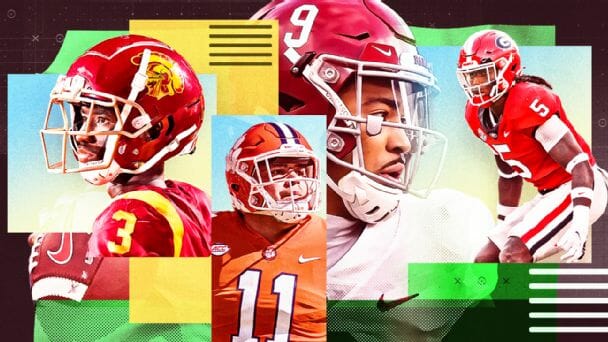
These are boom times for NFL-bound wide receivers. The past three NFL drafts have seen a total of 17 wideouts taken in the first round (the three drafts before that: seven), and nearly half of them (seven) have been picked 12th or higher. Each year the NFL collectively acknowledges the importance of the passing game a bit more — the last time a running back was picked higher than 24th: 2018 — and receivers have benefited from that almost as much as edge rushers.
Incredibly, almost none of these 17 first-rounders turned out to be reaches. Five produced 1,000-yard rookie seasons, five of the remaining 11 picked in 2020-21 did so in their second year, and three of the five from 2020 (not including Henry Ruggs) did so in their third, while a fourth came within 28 yards of that mark. Pick a wide receiver in the first round, and the odds are good that he’ll play like a first-round pick.
Is the receiver position easier to project than others? Perhaps. Of the 124 wideouts that (A) were drafted since 2016 and (B) have seen at least 50 targets in the NFL — admittedly a somewhat self-selecting sample, since some busts might not have hit that mark — there are some decent correlations between college and pro production. There’s a correlation of 0.47*, for instance, between a player’s catch rate in college and his catch rate in the pros and a correlation of 0.39 between yards per catch at the two levels. Sports Info Solutions has been collecting detailed college route data since 2018, and for players drafted in 2021 or 2022, a player’s yards-per-route-run average at the two levels correlates quite nicely (0.60 within this sample).
*Correlations run from minus-1 to 1. If a correlation is close to 1, the two variables in question rise and fall in solid alignment; if it is close to minus-1, the two variables are aligned in inverse — one rises while the other falls. If it is close to 0, there is almost no relationship between the two variables.
Some more correlations: minus-0.38 between a player’s combine or pro day 40 time and his yards per catch in the NFL (so the lower the 40, the higher the yards per catch), 0.33 between college and pro drop rates. And while these are more personality traits than quality traits, there’s a correlation of 0.55 between air yards per target at the two levels, 0.51 for yards after catch per reception.
In other words, we can glean something from a player’s college stats, even if the picture is incomplete.
What can we learn about the top of the 2023 draft class? While this crop might not have the same upside as last year’s — while ESPN draft analyst Mel Kiper Jr. lists four receivers among his top 25 overall prospects, the first one doesn’t show up until No. 16 overall — the statistical differences between prospects are intriguing.
The top five receivers in Kiper’s rankings are unique prospects who stood out in different ways at the college level. Let’s talk about what makes each distinctive.
Jump to a wide receiver:
Addison | Flowers | Hyatt
Johnston | Smith-Njigba
![]()







